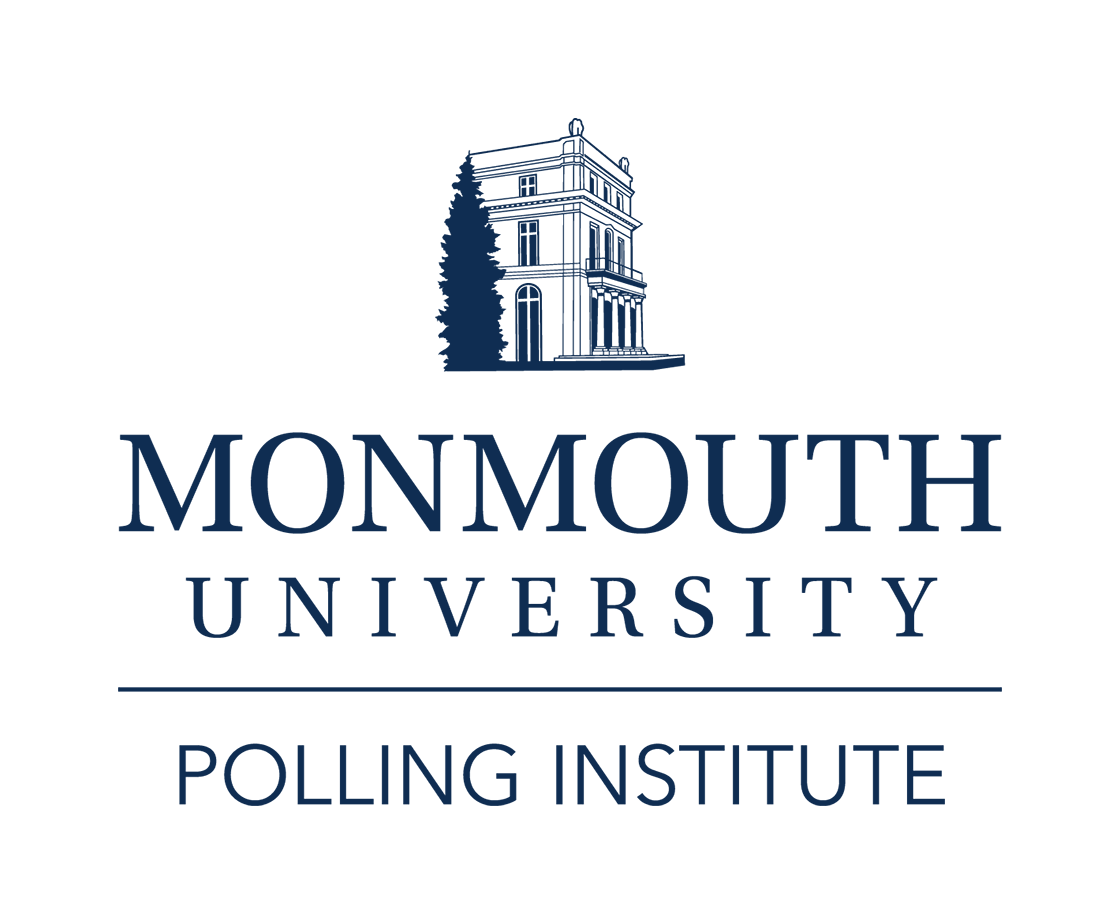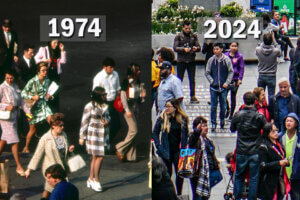West Long Branch, NJ – Hillary Clinton’s lead over Bernie Sanders in the latest national Monmouth University Poll has narrowed in the past month. However, Clinton retains a massive advantage among black and Latino voters – groups that will play a prominent role in the primaries immediately following Iowa and New Hampshire. She is also seen as the stronger nominee when pitted against the Republican field.
Clinton currently has the support of 52% of Democrats and Democratic-leaning voters nationwide, which is down from 59% in December. Sanders gets 37% support, which is up substantially from his 26% support level last month. Martin O’Malley has 2% support. This marks the first time Clinton’s lead has dropped below 20 points in a national Monmouth poll. [ Note: three-quarters of the interviews for this poll were conducted prior to Sunday’s debate. ]
Clinton has lost ground with nearly every major Democratic voting bloc since December. Her biggest drops have come among self-described liberals, going from a 57% – 31% advantage over Sanders one month ago to a 42% – 51% deficit in the current poll. She has also dropped significantly among women (from a 64% – 19% lead last month to a smaller 54% – 35% edge now) and voters under the age of 50 (from a 52% – 35% lead to a 39% – 52% shortfall).
However, Clinton has held onto high levels of support from two crucial groups. Voters over the age of 50, who make up the lion’s share of the actual primary electorate, continue to support her over Sanders by a substantial 64% – 24% margin, similar to her 67% – 16% lead among this group in December. Furthermore, black and Latino voters, who will comprise a large share of the vote in South Carolina and Nevada as well as in many Super Tuesday states, solidly support her by a 71% – 21% margin, which is actually an increase over her 61% – 18% lead last month.
“With a shrinking margin, a strong showing by Sanders in Iowa and New Hampshire could cut Clinton’s national lead even more. However, he would still have to overcome Clinton’s demographic advantage in the ensuing contests,” said Patrick Murray, director of the independent Monmouth University Polling Institute in West Long Branch, NJ. “Sanders is aided by the fact that most Super Tuesday contests are open to independent voters – a group where he performs well. On the other hand, about two-thirds of the pledged delegates awarded on March 1 will be from states where black and Latino voters comprise anywhere from one-third to a majority of the electorate. It looks like the demographic dynamic that hurt Clinton in 2008 may be what helps her in 2016.”
The poll also found that Clinton is seen as the stronger nominee against three possible Republican opponents. Just under half (44%) of Democratic voters say Clinton would have a better shot against GOP front-runner Donald Trump in November compared to just 16% who say Sanders would be better positioned in the general election. Another 35% say Clinton and Sanders would be equally as likely to beat Trump. Clinton is seen as the more formidable opponent against both Ted Cruz (39% Clinton better – 17% Sanders better) and Marco Rubio (37% Clinton better – 17% Sanders better).
The poll also asked Democratic voters which candidate would do a better job on four issues prominent in the nomination battle. Clinton bests Sanders on gun control – 39% to 21%, with another 30% saying they would perform about equally on this issue. Clinton also has a slight advantage on health care – 36% to 30% for Sanders, with 26% ranking the two candidates equally. [ Note: most of the interviews for this poll were conducted before Sanders released his health care plan on Sunday. ]
Sanders has the upper hand on a couple of economic issues, though. He is seen as better able to deal with Wall Street – 46% to 29% for Clinton, with 16% rating both candidates equally on this issue. Sanders also bests Clinton on being able to reduce the gap between rich and poor – 48% to 26%, with 20% rating both equally.
Personal ratings for the Democratic field have held fairly steady over the past month. Clinton scores a 69% favorable and 22% unfavorable rating, which is a slight dip from the 73% – 15% rating she held in December. Sanders earns a 63% favorable and 11% unfavorable rating, which is a few ticks up from his 59% – 16% rating last month. O’Malley’s 18% favorable and 18% unfavorable rating is basically unchanged.
The Monmouth University Poll was conducted by telephone from January 15 to 18, 2016 with 1,003 adults in the United States. This release is based on a voter sample of 352 registered voters who identify themselves as Democrats or lean toward the Democratic Party. This voter sample has a margin of error of ± 5.2 percent. The poll was conducted by the Monmouth University Polling Institute in West Long Branch, NJ.
DATA TABLES
The questions referred to in this release are as follows:
(* Some columns may not add to 100% due to rounding.)
1. Who would you support for the Democratic nomination for president if the candidates were – [NAMES WERE ROTATED]?
| January 2016 | December 2015 | October 2015 | September 2015 | August 2015 | July 2015 | June 2015 | April 2015 | |
| Hillary Clinton | 52% | 59% | 57% | 42% | 52% | 51% | 57% | 60% |
| Bernie Sanders | 37% | 26% | 24% | 20% | 16% | 17% | 12% | 7% |
| Martin O’Malley | 2% | 4% | 1% | 1% | 2% | 1% | 1% | 2% |
| (VOL) Other | 0% | 1% | 0% | 0% | 2% | 0% | 0% | 0% |
| Joe Biden | n/a | n/a | n/a | 22% | 12% | 13% | 12% | 16% |
| Lincoln Chafee | n/a | n/a | 1% | 0% | 0% | 0% | 0% | n/a |
| Larry Lessig | n/a | n/a | 1% | n/a | n/a | n/a | n/a | n/a |
| Jim Webb | n/a | n/a | 1% | 1% | 2% | 1% | 2% | 1% |
| (VOL) No one | 4% | 3% | 4% | 4% | 3% | 2% | 2% | 2% |
| (VOL) Undecided | 4% | 8% | 12% | 10% | 11% | 15% | 14% | 12% |
| Unwtd N | 352 | 374 | 340 | 339 | 429 | 357 | 350 | 356 |
2. I’m going to read you a few names of people running for president. Please tell me if your general impression of each is favorable or unfavorable, or if you don’t really have an opinion. [NAMES WERE ROTATED]
| Favorable | Unfavorable | No opinion | |
| Hillary Clinton | 69% | 22% | 9% |
| –December 2015 | 73 | 15 | 12 |
| –October 2015 | 77 | 18 | 6 |
| –September 2015 | 71 | 17 | 12 |
| –August 2015 | 71 | 17 | 13 |
| –July 2015 | 74 | 17 | 9 |
| –June 2015 | 78 | 12 | 10 |
| –April 2015 | 76 | 16 | 8 |
| –December 2014 | 82 | 11 | 7 |
| Martin O’Malley | 18% | 18% | 64% |
| –December 2015 | 18 | 18 | 63 |
| –October 2015 | 23 | 17 | 60 |
| –September 2015 | 13 | 14 | 72 |
| –August 2015 | 13 | 9 | 78 |
| –July 2015 | 13 | 14 | 72 |
| –June 2015 | 13 | 18 | 70 |
| –April 2015 | 21 | 12 | 66 |
| –December 2014 | 10 | 13 | 77 |
| Bernie Sanders | 63% | 11% | 26% |
| –December 2015 | 59 | 16 | 26 |
| –October 2015 | 60 | 11 | 28 |
| –September 2015 | 41 | 14 | 45 |
| –August 2015 | 42 | 12 | 45 |
| –July 2015 | 36 | 12 | 51 |
| –June 2015 | 29 | 18 | 54 |
| –April 2015 | 30 | 12 | 58 |
| –December 2014 | 22 | 13 | 65 |
3. Imagine that [Donald Trump/Marco Rubio/Ted Cruz] became the Republican nominee. Who would have a better shot at beating [Trump/Rubio/Cruz] in November – Clinton or Sanders, or would they be equally as likely to beat him? [NAMES WERE ROTATED]
| Would have a better shot against: | Donald Trump | Marco Rubio | Ted Cruz |
| Clinton | 44% | 37% | 39% |
| Sanders | 16% | 17% | 17% |
| Equally as likely | 35% | 35% | 37% |
| (VOL) Neither, both would lose | 3% | 4% | 2% |
| (VOL) Don’t know | 3% | 7% | 5% |
4. Now I’d like to ask you about a few issues. For each one, please tell me if Clinton or Sanders would do a better job, or if both would do about equally as well – [Gun control / Health care / Dealing with Wall Street / Reducing the gap between rich and poor]. [ITEMS WERE ROTATED]
| Would do a better job on: | Gun control | Health care | Dealing with Wall Street | Reducing the gap between rich and poor |
| Clinton | 39% | 36% | 29% | 26% |
| Sanders | 21% | 30% | 46% | 48% |
| Equally as well | 30% | 26% | 16% | 20% |
| (VOL) Neither would do well | 3% | 2% | 2% | 3% |
| (VOL) Don’t know | 8% | 5% | 7% | 3% |
The Monmouth University Poll was sponsored and conducted by the Monmouth University Polling Institute from January 15 to 18, 2016 with a national random sample of 1,003 adults age 18 and older. This includes 650 contacted by a live interviewer on a landline telephone and 353 contacted by a live interviewer on a cell phone, in English. Monmouth is responsible for all aspects of the survey design, data weighting and analysis. Final sample is weighted for region, age, education, gender and race based on US Census information. Data collection support provided by Braun Research (field) and SSI (RDD sample). The results in this poll release are based on a subsample of 352 registered voters who identify themselves as Democrats or lean toward the Democratic Party. For results based on this sample, one can say with 95% confidence that the error attributable to sampling has a maximum margin of plus or minus 5.2 percentage points (unadjusted for sample design). Sampling error can be larger for sub-groups (see table below). In addition to sampling error, one should bear in mind that question wording and practical difficulties in conducting surveys can introduce error or bias into the findings of opinion polls.
| POLL DEMOGRAPHICS (weighted) FULL SAMPLE – ALL ADULTS | ||
| 49% Male | 32% 18-34 | 66% White |
| 51% Female | 36% 35-54 | 12% Black |
| 32% 55+ | 15% Hispanic | |
|
7% Asian/Other | ||
| POLL DEMOGRAPHICS (weighted) DEMOCRAT VOTERS ONLY | ||
| 37% Male | 28% 18-34 | 57% White |
| 63% Female | 35% 35-54 | 24% Black |
| 38% 55+ | 11% Hispanic | |
|
8% Asian/Other | ||
Click on pdf file link below for full methodology and results by key demographic groups.




